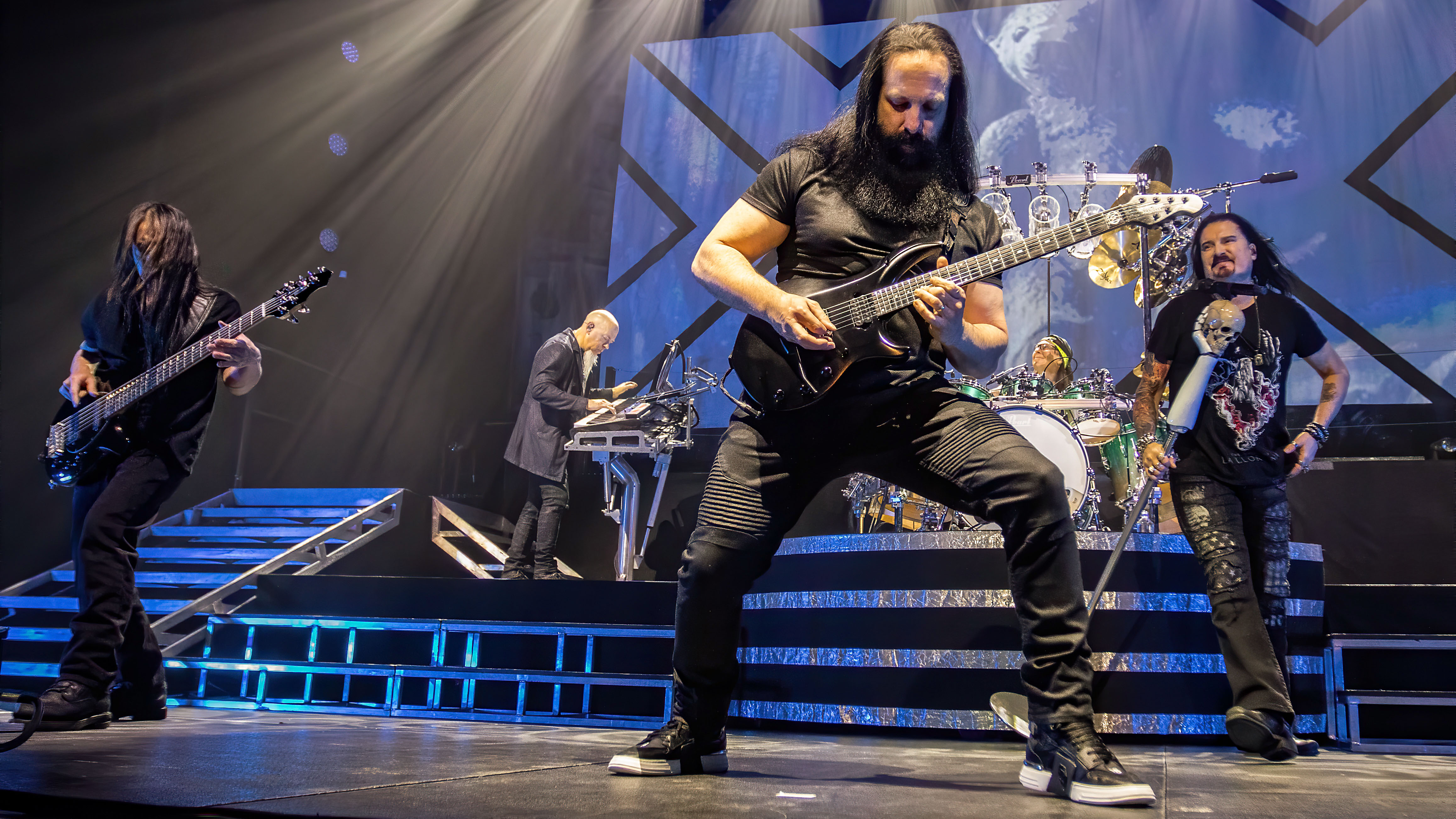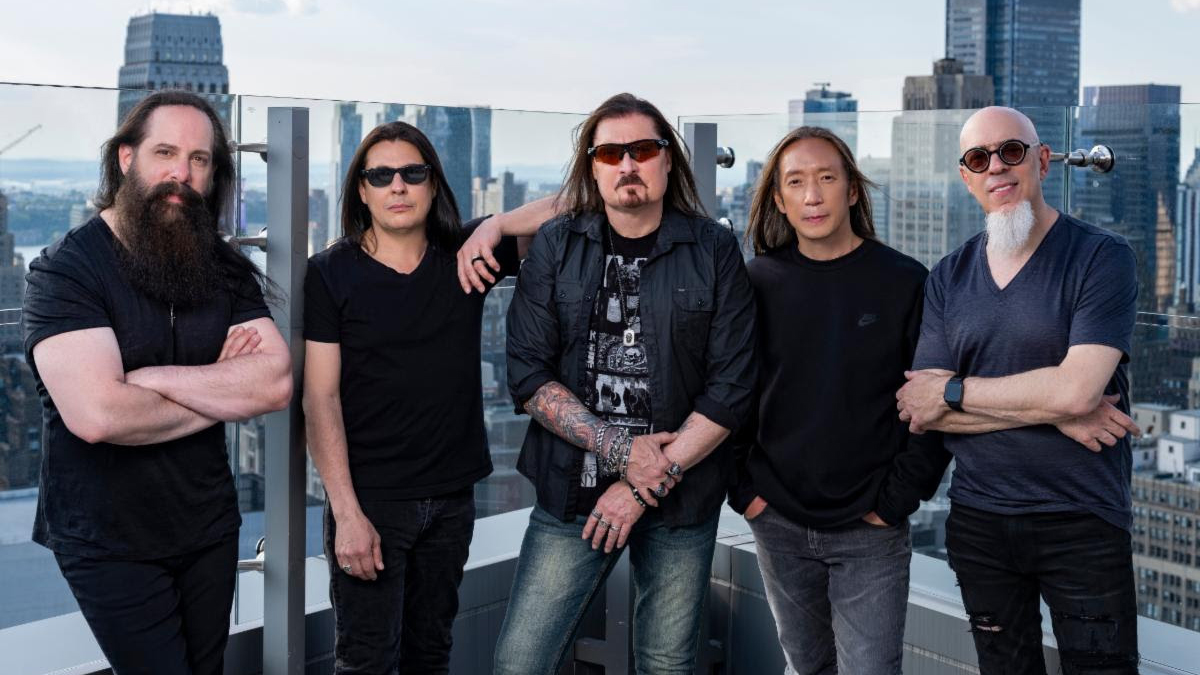5 songs guitarists need to hear by… Dream Theater
Best of 2021: Premium Petrucci

Best of 2021: Very few bands can say they typify a genre in the same way Dream Theater do for progressive metal. Since forming in 1985, initially under the name Majesty, the American group have become unlikely arena conquerors – bringing highly intelligent and complicated music to the adoring masses, and in the process inspiring new generations of accomplished creatives and noisemakers the world over.

Much of that success can be attributed to founding member John Petrucci who, along with his work in Liquid Tension Experiment and as a solo artist, has continually proven to be one of the most technically gifted guitar players on the planet. But it’s not all just blistering shred up and down the neck, the Dream Theater virtuoso knows when to rein it in and play slower lines that unravel more like vocal melodies, milking the right notes at the right time. In that sense, he’s very much the perfect package – a player who has mastered the arts of alternate picking, sweeping and every other technique you can think of, and yet still able to play with feel and dial it down where necessary. As every shredder knows, it’s a hard balance to get right…
“Your solos should be as interesting as any other part of the song,” he told MusicRadar back in 2019, as the band unveiled their fourteenth album, Distance Over Time. “It’s not an opportunity to shred. Well, okay, sometimes it is! Look at solos more like a compositional opportunity, like watching a movie. No-one wants a dead-boring scene; it has to push the story forward.”
As the progressive metal titans gear up towards releasing album number 15, this month’s A View From The Top Of The World, we thought we’d revisit some of Petrucci’s finest moments in their game-changing three and a half decade-long career…

1. Metropolis Pt. 1: The Miracle and the Sleeper – Images And Words (1992)
For many fans, it was early hit Pull Me Under that served as their introduction to Dream Theater – and there can be no doubt it’s one of the group’s most enduring and easily digestible offerings. For a real taste of what turned Petrucci and his cohorts into masters of their trade, however, the second longest track from their 1992 cult classic would be an exemplary reference point.
The harmonised solo in B natural minor that begins four and a half minutes in, for example, seems straightforward enough at first, though the burst picking that arrives 10 seconds later truly put fear in the hearts of guitar players in the early '90s.
Petrucci's the solo five minutes and 50 seconds in – mirrored on keyboards by Kevin Moore for the record – is nothing short of exquisite, thanks to the alternating rhythms injected into their F# Mixolydian blues.
Get the MusicRadar Newsletter
Want all the hottest music and gear news, reviews, deals, features and more, direct to your inbox? Sign up here.
2. Erotomania – Awake (1994)
This near-seven minute instrumental found on Dream Theater’s third album proves exactly why John Petrucci is a wearer of many hats. It opens with a metallic walking riff that disorientates the listener, swinging from left to right like a pendulum in chromatic hell. Two minutes and 38 seconds in, however, things change quite dramatically.
Petrucci coaxes some truly stunning and glassy cleans from his Ibanez signature. And then minute later he switches over to the lead channels of his long-favoured Mesa/Boogie amplifiers – most likely a Dual Rectifier on one side and a Mark IIC+ on the other – for what would many consider to be one of the most tasteful solos he’s ever written.
3. Fatal Tragedy - Metropolis Pt. 2: Scenes from a Memory (1999)
With its opening piano chords quickly descending into doomy tritones and diminished heaviness, as well as a good measure of palm muted chugging a few minutes later, Fatal Tragedy is one of the heaviest tracks from Dream Theater’s first concept album – and has a real sense of story to it.
The latter half of the song is essentially an extended solo section, with Petrucci and then newly appointed keyboardist Jordan Rudess trading back and forth at breakneck speeds.
The song reaches its breathtaking climax when both musicians lock in together for pedal point unison lines – in Petrucci’s case using the open B and E strings against notes fretted high up the neck. “Now it is time to see how you died,” the voice of The Hypnotherapist narrates after its epic conclusion, adding “Remember that death is not the end but only a transition.”
4. As I Am – Train Of Thought (2003)
For their seventh album, the five members of Dream Theater decided to up the ante on heaviness and show the world just how forceful they could be at full pelt. In terms of the guitar work, that meant lower tunings, increased gain and more palm-muted ideas to build on the group’s collective musical muscle.
Even by Petrucci’s standards, the guitar solo is a real workout for the picking hand with very little legato involved – there’s a real percussive quality to how he attacks the strings and charges through an avalanche of F minor pentatonic runs. And while it all falls under the umbrella of blues in terms of note choice, the aggression of the solo in terms of tone and speed is undoubtedly stems from the guitarist’s metallic shred influences.
5. Untethered Angel – Distance Over Time (2019)
Dream Theater’s fourteenth full-length was remarkably concise compared its predecessor The Astonishing – the 2016 double album comprised of 34 tracks spanning over a jaw-dropping two hours of music.
Clocking in at under an hour, the music felt more direct and less convoluted, though there was still plenty of that trademark musicianship on display, such as the staccato bursts played by the whole band three and a half minutes into opening track Untethered Angel.
The solo that follows has a C Phrygian feel, with some lines played in Phrygian Dominant – the fifth mode of F Harmonic Minor – as well as some diminished runs to capitalise on its sense of otherworldly mystique. As always, Petrucci’s phrasing is impeccable, striking that perfect balance between ambition and taste in the way that only he can.
5 songs guitarists need to hear by… Megadeth
Amit has been writing for titles like Total Guitar, MusicRadar and Guitar World for over a decade and counts Richie Kotzen, Guthrie Govan and Jeff Beck among his primary influences. He's interviewed everyone from Ozzy Osbourne and Lemmy to Slash and Jimmy Page, and once even traded solos with a member of Slayer on a track released internationally. As a session guitarist, he's played alongside members of Judas Priest and Uriah Heep in London ensemble Metalworks, as well as handling lead guitars for legends like Glen Matlock (Sex Pistols, The Faces) and Stu Hamm (Steve Vai, Joe Satriani, G3).










